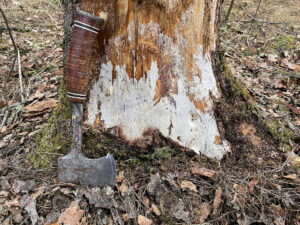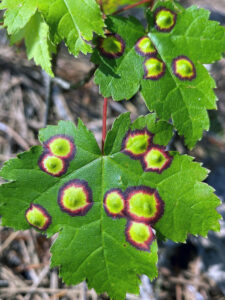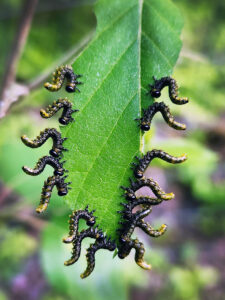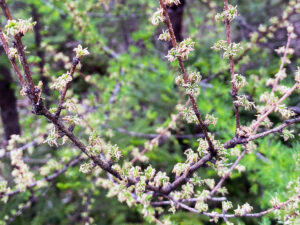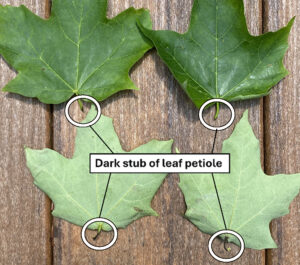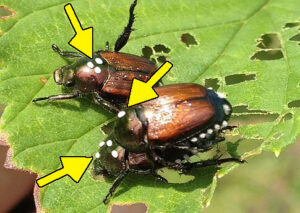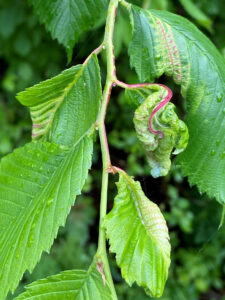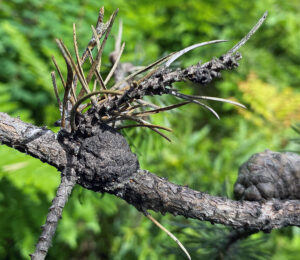
Hollow pitch blisters get darker with age and may resemble cones until closer examination. / Photo Credit: Wisconsin DNR
By Linda Williams, DNR Forest Health specialist, Woodruff
Linda.Williams@wisconsin.gov or 920-360-0665
Northern pitch twig moth (Petrova alhicapitana) is also called the pitch nodule maker or pitch blister moth.
It feeds on branches and twigs of young jack pine and scotch pine, causing a hollow blister of gooey pitch to form around the larvae as it feeds at the base of a lateral branch. It prefers trees that are 20 feet tall or smaller, although it can attack older trees.
Continue reading “Northern Pitch Twig Moth Creates Pitch Blisters On Jack Pine”

